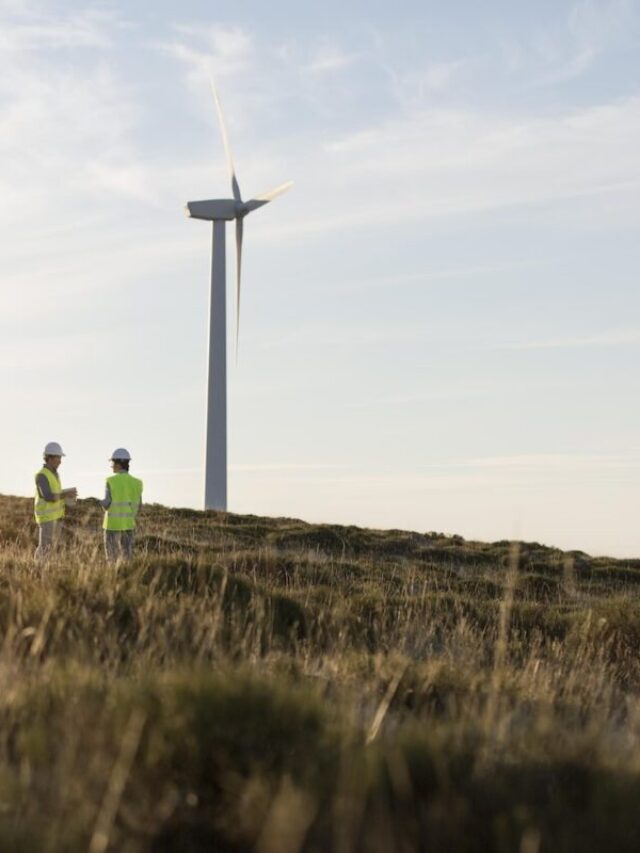The world is faced with the twin threat of climate change and biodiversity loss, each reinforcing the other. Changes to the climate such as rainfall patterns and rising average temperatures are contributing to the biodiversity crisis along with habitat loss, resource extraction, invasive species and pollution. In turn, carbon sinks provided by healthy ecosystems are threatened as the biodiversity crisis worsens, leading to negative climate impacts.
Australia is attempting a rapid energy transition to address climate change with a goal of 82% renewable energy by 2030. As renewable energy infrastructure is rolled out, a passionate debate is emerging about its impacts. According to the Minister for Climate Change and Energy Chris Bowen, the energy transition requires around 10,000 kilometres of transmission lines and 60 million solar panels.
The large-scale deployment of renewable energy is essential to address the biodiversity crisis by mitigating climate change, but it can also have negative ecosystem impacts. These include the environmental impacts of mining for critical minerals, the loss of habitat in places where solar and wind farms are built, bird and bat strikes by wind turbines, and pollution from the landfilling of renewable technologies.
Renewable energy has lower environmental impacts than fossil fuels, but the scale at which renewable energy is being deployed carries significant risks to already stressed and threatened ecosystems.
WWF Australia commissioned the Institute for Sustainable Futures to contribute to an informed debate on renewable energy and ecosystems by undertaking a global literature review to collate evidence on impacts and approaches to move towards ‘best’ or ‘better’ practice.
While there is a body of studies evaluating various environmental impacts of renewable energy technologies and offering mitigating approaches, the information remains uneven and robust evidence is often lacking to make definitive statements.
Nonetheless, our review found a range of ways impacts are being reduced from strategic planning through to the use of smart technology.
– Minimising habitat loss through strategic planning: strategic planning at a regional level to avoid siting renewable energy in areas with high biodiversity value is the most effective strategy. One example of strategic planning between experts, industry and communities is the Nebraska Wind and Wildlife Working Group Guidelines. In Australia, the Renewable Energy Zones provide a platform for more strategic planning.
– Minimising land-use impacts through site selection and project design: Site selection and design can minimise ecosystem impacts, and in some cases improve biodiversity – e.g. projects can be sited on degraded land, and impacts on wildlife can be reduced by maintaining wildlife corridors or creating new habitats.
- – Increasing circular economy practices to minimise materials, water-use and waste: Energy-intensive materials and water used during construction can be reused or recycled (e.g. greywater or wastewater, reusing excavated materials for roads).
– Using smart operation technologies and multi-functional land-use to minimise impacts: While bird strike by wind turbines is a source of much controversy, there is limited body of peer-reviewed before-and-after studies for wind farms. Smart technologies create new opportunities nonetheless to minimise impacts. For example, AI technology is being used by some wind farms (e.g. Cattle Hill) to reduce bird strikes by detecting the presence of birds and temporarily shutting down turbines if a risk of collision is identified.
Multi-functional land-uses (e.g. agrivoltaics) can reduce competition between land-use for energy production (notably solar farms), food production and biodiversity conservation.
– Minimising waste and land impacts at end-of-life and decommissioning: While challenges still need to be overcome, several initiatives are emerging for the reuse, refurbishing and recycling of renewable energy technologies – notably solar panels, wind turbines and blades, and batteries – e.g. Siemens Gamesa developed a RecyclableBlade which can be used for offshore and onshore wind projects. In New South Wales, a Circular Solar Trial has been undertaken to develop processes to recycle solar panels and create an end market for recovered solar panel glass.
– Reducing impacts from mining and manufacturing in renewable energy supply chains: The large-scale deployment of renewable energy requires critical minerals, which could lead to widespread social and environmental mining impacts. Responsible sourcing strategies need to be adopted to reduce environmental and social impacts along the supply chain.
- New regulatory approaches (e.g. the European Union Battery Regulation) and certification systems (e.g. the Initiative for Responsible Mining Assurance) are emerging to drive improvements. While responsible sourcing can reduce the impacts of mining for critical minerals, they are not a substitute for demand reduction measures.
What are the next steps?
In practice, striking the balance between a rapid transition to clean energy and ecosystem protection will be challenging. A good-faith approach to reconciling the development of renewable energy and ecosystem protection involves recognising a thorny problem: a rapid scale-up in renewable energy is required to address climate change, but there will be trade-offs which often minimise rather than eliminate environmental impacts.
We will need to “build it as we go” because we do not have the luxury of time: the data, systems, practices, and technologies to minimise biodiversity impacts are going to have to be developed in parallel with the roll-out of renewable energy. An honest, collaborative approach is required between governments, industry, environmentalists, and First Nations communities.
We also need to be more ambitious – to move beyond just mitigating impacts and adopt “nature positive” approaches which aim to reverse nature loss. The “Mitigation Hierarchy” (avoidance, minimisation, restoration/rehabilitation and offsets) is being superseded internationally by the “Mitigation and Conservation hierarchy,” which integrates nature positive initiatives that not only aim to address the impacts of a specific project but also ‘historical, systemic and non-attributable’ damage to ecosystems.
Laure-Elise Ruoso, Chris Briggs, Jordan Roods and Elsa Dominish are from the Institute for Sustainable Futures at the University of Technology Sydney







